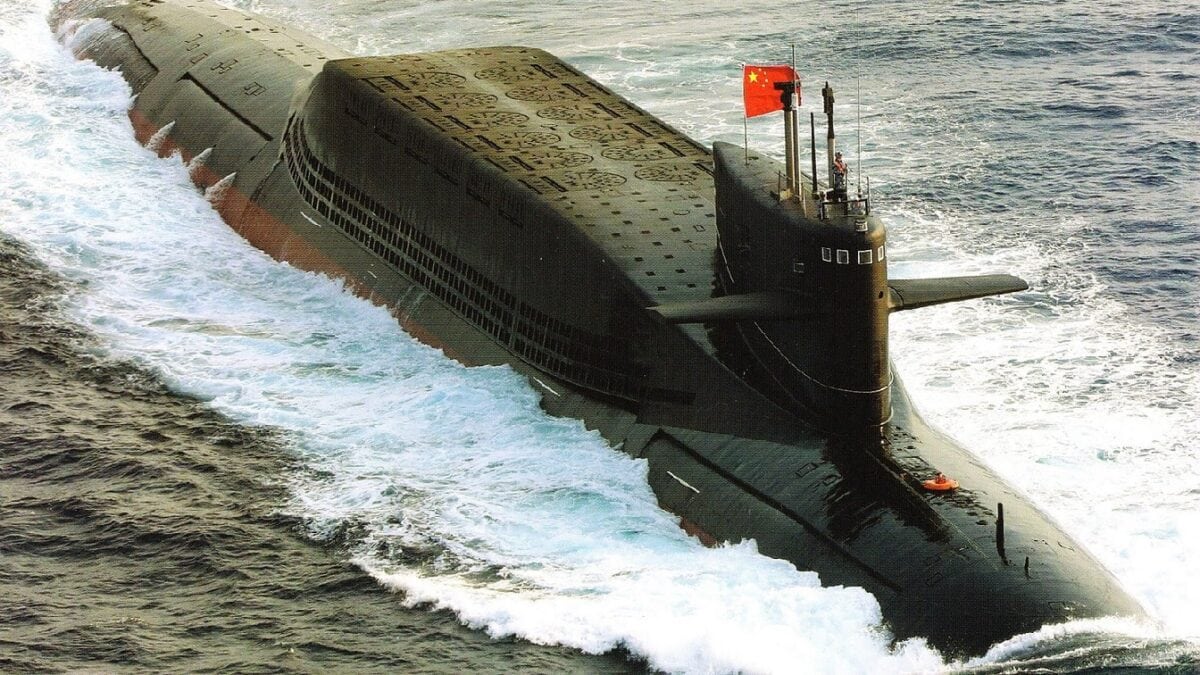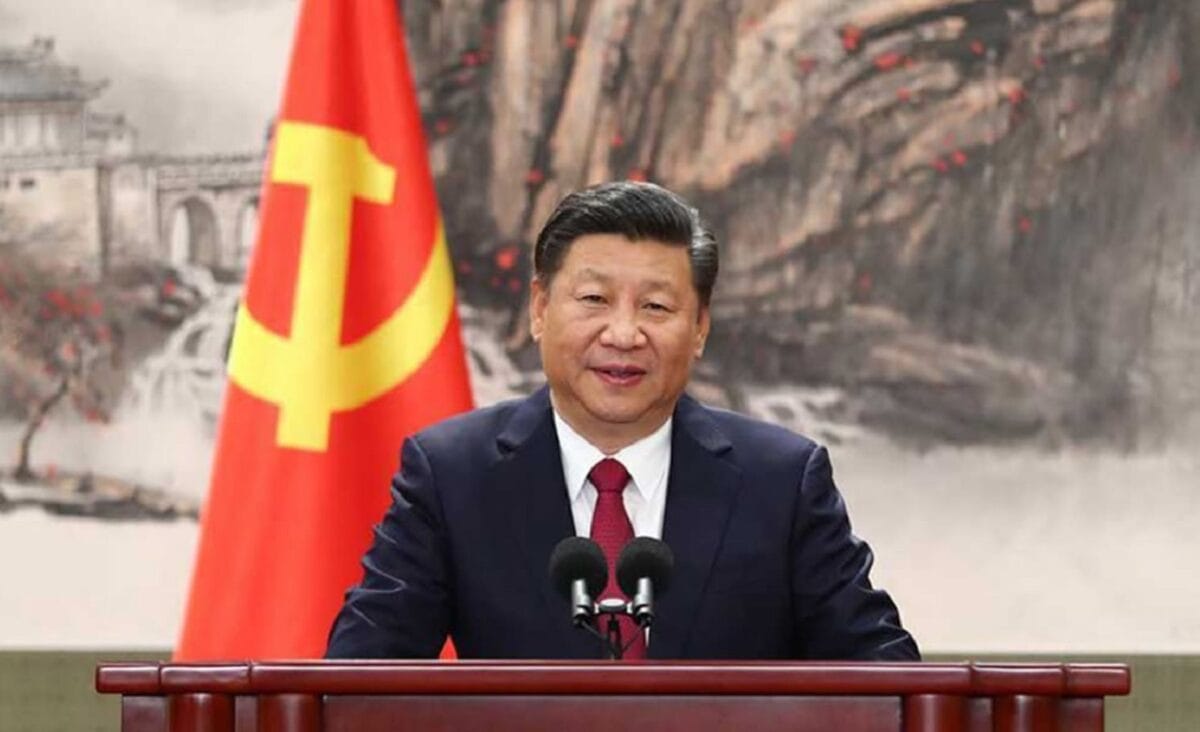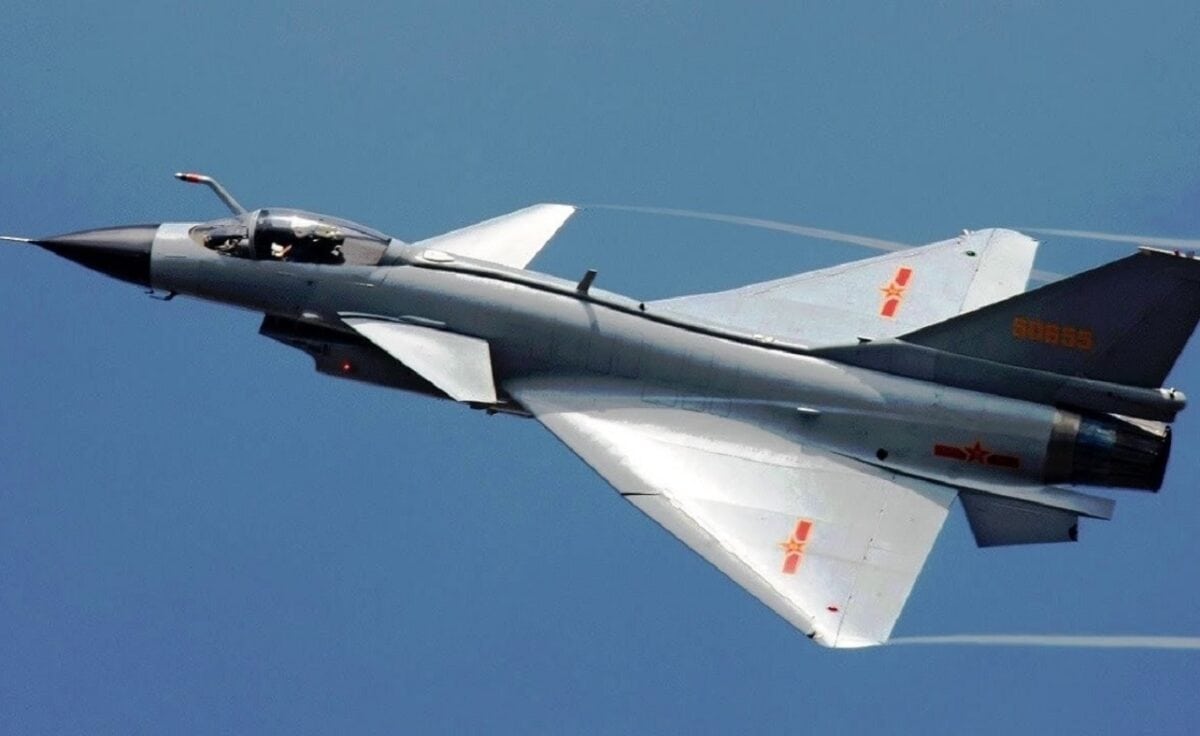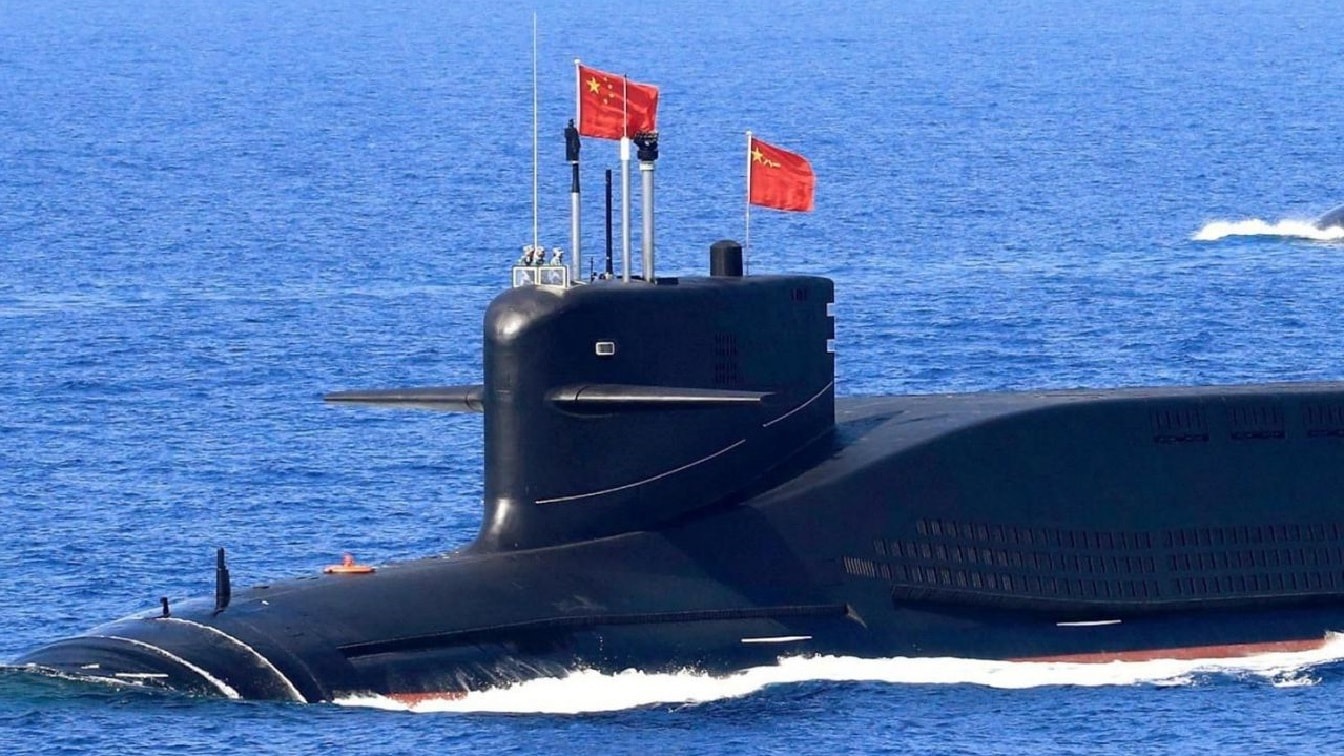Editor’s Note: These remarks were made by Dr. James Holmes at the Strategic Deterrent Coalition Symposium, Mystic, CT, April 28, 2022 – Even though this is a conference mainly about nuclear deterrence, it’s important to note that strategic deterrence vis-à-vis China involves far more than doomsday weapons. The Chinese Communist Party has resolved to make geostrategic gains with the least amount of physical force possible. Preferably party chieftains want to intimidate Asian neighbors without warfare; they want not to fight, and pursue their aims accordingly. Therefore, deterring China in the “gray zone” and the conventional arena is strategic deterrence. I will say a few words about each category of deterrence before moving on to nuclear deterrence in the “second nuclear age” we see taking shape around us. The late, great military historian John Keegan declared that the distinctions between levels of war are “elusive” and “artificial,” and I will proceed in his free-flowing spirit today.
I have two favorite devices for thinking about how to deter, no matter which level you’re talking about. First, there’s Henry Kissinger’s formula. Kissinger sees deterrence as a product of multiplying three variables, namely capability, resolve to use that capability to carry out our deterrent threat, and the adversary’s belief in our capability and resolve. So there are elements of human and material military excellence; political willpower; and the ability to communicate our strength and resolve to an opponent inclined to defy our threats. If we make believers out of our opponents, we will deter them. But Kissinger reminds us that if any one of those variables goes to zero, so does deterrence. We can be military titans, utterly resolute, and still fail to deter if the opponent disbelieves in our capability, resolve, or both.
And then there’s Carl von Clausewitz, not normally known as a theorist of deterrence or coercion. But he does tell us there are three ways a contender can win, and only the first necessarily involves defeating the enemy on some battleground and imposing terms. The second involves putting the enemy in a hopeless position, and the third involves convincing the enemy he can’t prevail at a cost he can afford to pay, or is willing to pay. These operate in peacetime strategic competition as well as wartime. If we put a rational opponent in a hopeless or unaffordable position, he should desist from actions we forbid. This to me adds texture and dynamism to Kissinger’s formula. It brings the opponent’s fluctuating cost/benefit calculations into the mix rather than just explaining that we should make ourselves strong and determined in hopes of cowing our opponent into inaction.
Now let’s put these ideas from the greats to work in three domains, namely the gray zone, conventional aggression, and the nuclear realm –
First, gray-zone aggression. China has set out to make the South China Sea in particular into sovereign territory where Beijing makes the rules—just as it makes laws and policies governing what happens on dry land within China’s borders. It has loudly and repeatedly proclaimed “indisputable sovereignty” over some 80-90 percent of that body of water, sovereignty meaning state ownership of territory. It has used the China Coast Guard and a maritime militia embedded in the fishing fleet as its implements of first resort to enforce its version of the rules, the idea being that if you claim territory is your own, you should go ahead and start policing it as though sovereignty were already an established fact. It backstops these paramilitary implements with the overwhelming sea, air, and missile power wielded by the People’s Liberation Army. No Southeast Asian military can stand against the PLA, everyone knows it, and this translates into deterrent and coercive leverage for Beijing.
And Chinese forces have the advantage of always being there. China is always on the scene in force in the South China Sea these days, and yet the United States and other outsiders have opposed its gray-zone operations through intermittent operations such as freedom-of-navigation cruises. The come-and-go approach is not enough. You have to be there—and stay—to compete with any hope of success. Otherwise we show up, make our demonstration, and go away. We vacate the field of competition and turn it back over to the Chinese. This is no way to prevail in any contest.
To improve our competitive position we should look at gray-zone competition through the eyes of a Philippine or Vietnamese fisherman, and design operations to give that person solace as he goes about his trade. We need to add rungs to our escalation ladder, giving ourselves options apart from standing idle or taking up arms. In Kissinger’s terms, we need to display formidable capability where it matters most, giving confidence to allies and friends and implanting fear and doubt in the minds of our adversaries. If they doubt they can get their way by increments, they will either deescalate to routine diplomacy in regional waters, or they will escalate to violence—and brand themselves the aggressor in the eyes of Asian and world opinion.
Now, I am skeptical that we can deter China forevermore through such measures. The party leadership has too much invested in making offshore waters Chinese property; it has tied this quest to national sovereignty and dignity, rousing deep passions. And Xi Jinping has staked his personal prestige on it in the eyes of the Chinese people, making it hard to back down. But in Clausewitzian terms, we can try to put China in what Communist Party leaders see as a hopeless situation, or a situation in which the costs of prevailing are unbearable. Being deterred will be Beijing’s least bad option.
If we and our regional partners can do that long enough on a day-by-day basis—if we can arrange things so that Xi wakes up each morning, reads the morning news, and tells himself today is not the day—then good things could happen over the long term. Xi is not a young man; we might outlast him, and perhaps a more enlightened successor might come along. This is a long game, and we have to be on the field of competition armed with lots of escalatory options if we and our partners hope to prevail against Beijing’s effort to subvert and rewrite the law of the sea bit by bit.
Second, conventional aggression. So conventional deterrence on our part plays directly into deterrence in the gray zone. It degrades that backstop to the efforts of the China Coast Guard and maritime militia. It also sows doubt in Chinese Communist Party minds about their ability to prevail in a conventional conflict, most likely in the Taiwan Strait or the East China Sea. To bring one more concept from Clausewitz into this discussion, Beijing is tacitly playing with the U.S. “value of the political object” calculation vis-à-vis these potential battlegrounds. Clausewitz tells us, in effect, that how much a contender wants its goal—its “political object,” as he calls it—determines how much it spends on that goal, and how long it keeps on spending. The “magnitude” of the effort is the rate at which a contender spends relevant resources such as treasure and military lives, and the “duration” of the effort is how long it lasts. Just like in basic physics, the rate multiplied by the time gives you the total amount of something—in this case, the cost you have to pay for your goal.
The problem is that the price is not fixed. China can manipulate calculations at the Pentagon and the White House. In the case of Taiwan, it could try to drive down the value of the island to the United States, convincing our leadership that saving it from invasion is not an especially worthwhile cause. Hence Beijing’s incessant efforts to dishearten the Taiwanese populace, military, and government. If Taiwanese are too fearful to defend themselves, Xi can ask under his breath, why should Americans do it for them?
China can also drive up the magnitude of the effort for Washington by constructing potent anti-access and area-denial defenses to exact a fearsome price from the U.S. joint force. And it has done just that. As U.S. Marine commandants like to say, we now have to fight to get to the fight, and will pay a price even before we get to the battlefield. If America’s superpower standing in the world depends on sea power, Xi can, again, under his breath, ask President Biden and Secretary Austin whether it’s worth risking our place in the world for the sake of a small island populated by 23 million people under the shadow of a rival superpower. Xi might hope they gauge the opportunity costs of bucking China’s will as unacceptable, and thus stand aside or at least hesitate during a cross-strait war. Either way, Washington grants Beijing time to accomplish its aims before others intercede.
How do we deflate such an effort to dishearten our leadership and society? It’s simple—although Clausewitz tells us the simplest thing is difficult in strategic competition and warfare. We must maintain conventional forces capable of prevailing against Chinese anti-access defenses on China’s home ground. We must keep our regional partnerships strong, not just with Taiwan, but also with other stakeholders such as Japan, and show China it will confront a strong, united coalition rather than a single isolated foe. And we must make the case to the American people that Taiwan matters. This is an easier case to make now that Russian aggression against Ukraine has made clear the fate small states may suffer in a might-makes-right world. If we do this—if our show of combined capability and resolve impresses Xi and his lieutenants—then he may desist from rolling the iron dice. We will have disheartened our adversary while giving heart to allies and friends.

Chinese Nuclear-Powered Ballistic Missile Submarine.
And third, nuclear gamesmanship. Around the turn of the century Paul Bracken, a professor at the Yale School of Management, made popular the notion that the world had entered into a second nuclear age, and that Asian military power would be a prominent feature of it. A decade ago my friend and coauthor Toshi Yoshihara and I put together a volume for Georgetown that accepted Bracken’s premise and looked at various entrants into the second nuclear age as well as gatekeepers of the first. Our goal was to project what their nuclear strategies might look like.
The basic premise underlying the second-nuclear-age thesis is that there are now fewer nuclear weapons in the world, but there are more nuclear-weapon states; they come in many different shapes, sizes, force structures, and cultures; and they are situated near one another geographically, making one-on-one deterrence elusive. Look no further than India and Pakistan, which made their entry to the nuclear club by virtue of near-simultaneous nuclear tests in 1998. Nuclear-armed China is a factor in atomic diplomacy in South Asia by virtue of its borders with embattled Kashmir and Jammu. Or there’s North Korea, which borders nuclear-weapon states Russia and China as well as South Korea, a beneficiary of U.S. extended deterrence. Moreover, the North glares at Japan, another beneficiary of U.S. extended deterrence, across the Yellow Sea and Sea of Japan. New entrants are building up their doomsday arsenals, while oldtimers use arms control to stabilize the military balance among themselves, and try to figure out how to hold down newcomers. Dynamism prevails—in sharp contrast to the relatively stable East/West balance of terror from the Cold War.
Now, China is one of five officially recognized nuclear-weapon states, having detonated an atomic device in 1964, some years before the Nonproliferation Treaty codified the principle of nuclear nonproliferation in international law. It belongs to the first nuclear age in that strict chronological sense. Nevertheless, in our Georgetown volume we depict China as a nuclear newcomer. During the late Cold War decades it got by with a “minimum deterrent” force of some 20 intercontinental ballistic missiles, on the logic that if the People’s Liberation Army had enough ICBMs to ensure that one got through an adversary’s defenses, adversary leaders would deem that amount of damage intolerable and stand down. Deterrence would hold.

Chinese President Xi Jinping. Image Credit: CCP.
It was starting to become apparent a decade ago, and has become glaringly obvious in recent years, that there China’s nuclear strategy and forces have undergone a discontinuity. No longer do familiar trendlines from the first nuclear age hold. We are seeing something new as the PLA dramatically expands its land-based ICBM inventory. The Pentagon now estimates that China could field at least 1,000 nuclear warheads by 2030. By sheer numbers, this marks a paradigm shift from minimum deterrence. China has also fielded an invulnerable second-strike capability in the form of its first working class of nuclear-powered ballistic-missile submarines, the Type 094. These developments mark such a radical break from the first nuclear age that we designated China a newcomer to the second.
Look at the geometry of deterrence in terms of geography and alliances. China is a nuclear-armed, hybrid land/sea power occupying the rimland between the Pacific Ocean and the Central Asian heartland. Adjoining it on land are fellow nuclear-weapon states Russia, North Korea, India, and Pakistan, while it faces off to the east against U.S. allies or partners along the first island chain. And in fact, it faces off against the United States, a resident power in the Western Pacific since 1945. Atomic diplomacy is a fact of life around much of the Chinese periphery. This makes it exceedingly hard for the allies to design a deterrent strategy toward, say, North Korea. Because of physical proximity, China is apt to interpret anything the allies do to deter Kim Jong-Un as covertly aimed at China. Communicating intent to Beijing is hard at the best of times, and more so when nuclear weapons are involved. Kissinger and Clausewitz might well despair of the attempt.
And then there are alliances. China is at least loosely allied with Russia, North Korea, and Pakistan, an entente that occupies a crescent sweeping from European Russia around the East Asian rimland and terminating in the Arabian Sea. This continental entente faces outward along interior lines toward the United States, its allies, and the “Quad,” a maritime consortium that occupies an outer crescent that runs from the Aleutians, down the first island chain through Japan and Taiwan, and around the South China Sea rim, terminating in the western Indian Ocean. This U.S.-aligned entente is on exterior lines, looking into the Eurasian rimlands. And it features an informal but increasingly intimate partnership with India on the subcontinent, since the Quad aims at curbing China’s ambitions at sea.
It behooves us to study the dynamics within each coalition as we try to craft a strategy that deters China without being unduly escalatory. For example, to what extent does Beijing egg on Pyongyang or Islamabad to make trouble for U.S. partners? How, if at all, does India—a nuclear-armed nonaligned nation that now tilts toward the United States yet insists on remaining on good terms with regional adventurers like Russia and Iran—figure into deterrence vis-à-vis China through its efforts in the Quad? Such are the vagaries of the second nuclear age.
Andrew Krepinevich has taken to calling the new nuclear age a “tripolar” nuclear age. He is right, but I fear he understates the volatility of this brave new world. There is a U.S.-China-Russia strategic triangle to be sure, but many other newcomers to the nuclear club intersect with and complicate deterrence among these three, as do aspirants to nuclear-weapon status such as Iran. Will newcomers accept the logic of mutual assured destruction, as nuclear-armed states did during the first nuclear age, or will perverse incentives induce them to roll the dice in times of trouble? If they do gamble, even with tactical weapons, they could embroil their partners or neighbors in horizontal escalation on the map as well as vertical escalation toward a strategic exchange.

J-10 Fighter.
So how do we deter a China that has broken so sharply with its nuclear past, at a time of growing volatility in the international system? By threatening what General Secretary Xi Jinping, the Chinese Communist Party, and Chinese society treasure most. Xi calls this the “Chinese Dream,” his banner for a packet of domestic and foreign policies designed to make China great again after its long “century of humiliation” spanning from the First Opium War in the late 1830s until victory in the Chinese Civil War and the founding of the People’s Republic of China in 1949. Making China’s dream come true demands vibrant industry at home, centered mainly on economic hubs along the Chinese coastline. Providing an increasing standard of living for more and more of the Chinese people is how the Communist Party justifies its rule. In turn China must have commercial, diplomatic, and military access to the Western Pacific and points beyond to complete the supply chain, mainly at sea. The United States, its allies, and its friends occupy the first island chain and are positioned to block that access should they choose to do so. This is what I have called a “Great Wall in reverse” strategy designed to block maritime movement between the China seas and Western Pacific, imprisoning the merchant fleet and the People’s Liberation Army Navy within. If, instead of a glorious image of national rejuvenation, we can cast the image of a barren economic wasteland into the minds of Xi, his advisers, and ordinary Chinese, we may well deter them, on the logic that being deterred is less awful than seeing the national project come to ruin.
Down on the operational and force-design levels, the PLA Navy surface fleet commands outsized importance in Beijing, in large part because the Imperial Japanese Navy demolished the Qing Dynasty navy in 1895, wrested away Taiwan and the Senkaku Islands in the aftermath of that war, and displaced China from its accustomed place atop the Asian pecking order. Rebuilding a great navy is essential to China’s dream. Threatening today’s surface fleet with destruction could reawaken painful historical memories and exert a powerful deterrent effect. Similarly, it appears that the PLA Navy intends to use the South China Sea and possibly the Bohai Sea as bastions for its SSBNs. If so, we can use that information to help devise counterstrategies and deployments for maximum effect. And so forth.
In short, there is no substitute for studying the prospective foe to see what makes it tick and how we can calibrate our actions and forces to achieve that combination of capability, determination, and belief of which Kissinger writes, and to convince its leadership that aggression is a hopeless cause or would entail unbearable costs, in keeping with Clausewitz’s formula for bloodless victory. Always start with the classics when plotting strategy.
In short, the second nuclear age abounds with complexities and hazards. This is the backdrop against which we and our allies must try to deter China from using its option of last resort. We have the mixed blessing to live in interesting times.
James Holmes is J. C. Wylie Chair of Maritime Strategy at the Naval War College and a Nonresident Fellow at the Brute Krulak Center for Innovation & Future Warfighting, Marine Corps University. The views voiced here are his alone.

